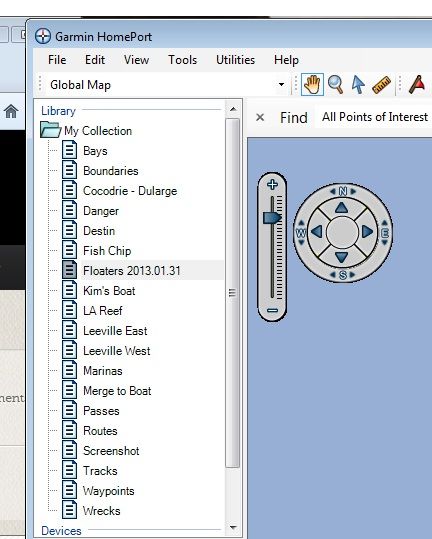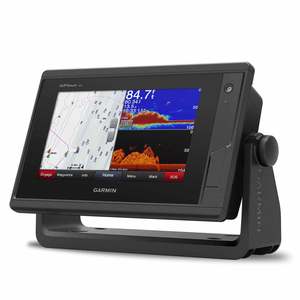
- #USER MANUAL FOR GARMIN HOMEPORT SERIAL#
- #USER MANUAL FOR GARMIN HOMEPORT PATCH#
- #USER MANUAL FOR GARMIN HOMEPORT WINDOWS#
#USER MANUAL FOR GARMIN HOMEPORT SERIAL#
Some GPS receivers have a serial connector that can be wired to a DB-9 serial connector. OpenCPN can communicate with many GPS receivers via a serial connection. A lot depends on which GPS model you have. There are so many GPS models that the answer is a bit complicated. Make an icon for the batch file on your desktop.Ĭopy-Routes-AB.bat Copy \\ComputerA-name\C:\ProgramData\opencpn\navobj.xml \\ComputerB-name\C:\ProgramData\opencpn\navobj.xmlĬopy-Routes-BA.bat Copy \\ComputerB-name\C:\ProgramData\opencpn\navobj.xml \\ComputerA-name\C:\ProgramData\opencpn\navobj.xmlįor more discussion see Cruiser Forum Thread Real-time sharing waypoints and routes Can I restore my Route, Wpts or Track from backups? Somehow? Make an icon for the batch file on your desktop. Make a script or batch file to copy to navobject.xml file. See Navigation Data Backup for more information. gpx file containing all waypoints/routes/tracks.
#USER MANUAL FOR GARMIN HOMEPORT WINDOWS#
For windows this is usually “C:\programdata\opencpn\”. The navobj.xml file resides in the same folder as the opencpn.ini settings file, under the OpenCPN User folder. This does all waypoints/routes/tracks at once. gpx file and import the waypoints, routes and/or tracks. To copy all waypoints or routes, make a copy & rename the navobject.xml file to.
#USER MANUAL FOR GARMIN HOMEPORT PATCH#
The Potato Patch Shoal outside SF may be 7-9 meters deep, but that doesn't mean I consider it safe water.Ĭruiser Forum Thread What is this chart object symbol (magenta circle with X)? You may wish to do this anyway, for example what I consider a safe depth within a bay is different from what I may consider at sea. Thus, the simplest way to make the isolated danger marks disappear is to adjust the safety depth/contour to be deep enough. That's why soundings shallower than the value you enter will appear in black font, to make the hazardous ones more visible. Since the contours defined in the charts can be deeper than the value you select (the computer rounds up), it's possible that you sometimes will need to cross the safety contour. to mark areas shallow enough to anchor in. The deep water setting is then used however one likes, e.g.


The traditional approach is to set the shallow contour to the “will run aground” depth, while the safety contour is calculated from your draft, safety margin, and height of tide. The isolated danger indicators are shown or hid based on the safety depth/contour setting. * Safety Depth: 5 meters to get highlighted soundings where I should not anchor due to weed/grass and to get rid of unimportant isolated dangers. * Shallow: 2 meters > Dark blue: keep out. They can be used in different ways but my boat (1.7 meters depth) and own philosophy gives this: Users generally prefer rhumb line because Could happen with a large motor vessel, I suppose…

Rare indeed would be the case in which a two-point route long enough to benefit from GC Sailing would be traveled without need to change course for other tactical reasons (weather, traffic, etc.). Of course, other chart plotters may do this differently from OpenCPN. If the A/P is doing GC Sailing, then you would see the XTE reported by OpenCPN diverging from zero, as expected. Alternatively, if it ignores XTE, and computes a running GC course based on the target waypoint location and current ownship position, then it is doing GC Sailing. If the A/P uses only XTE, then it is sailing Rhumb Line. The current GPS position and the target waypoint position are available in the messages sent above. If an autopilot is steering the boat, it may choose to follow GC route if it wants to. The Cross-track error (XTE) output by OCPN is calculated as for Rhumb Line Sailing, i.e. Note that despite the patch, devices must still be accessible as described in Where are the Chart Buttons "Piano Keys" at the bottom of the OCPN screen? Such links are visible in the GUIĪ new point Flatpak point fix has been pushed for this issue. * The first is to write the name of the device, perhaps something like /dev/ttyUSB0 in the GUI (one don't have to select from the drop-down list, it's possible to enter the device name as well) * The second is to create a device link as described in, the chapter on Fixed Device Names. * Even if the port is accessible it might not be visible in the UI. * There is a bug: * The port must be accessible. See CF Dataport Connection problem There are some things related to serial data ports, in particular on Flatpak.


 0 kommentar(er)
0 kommentar(er)
